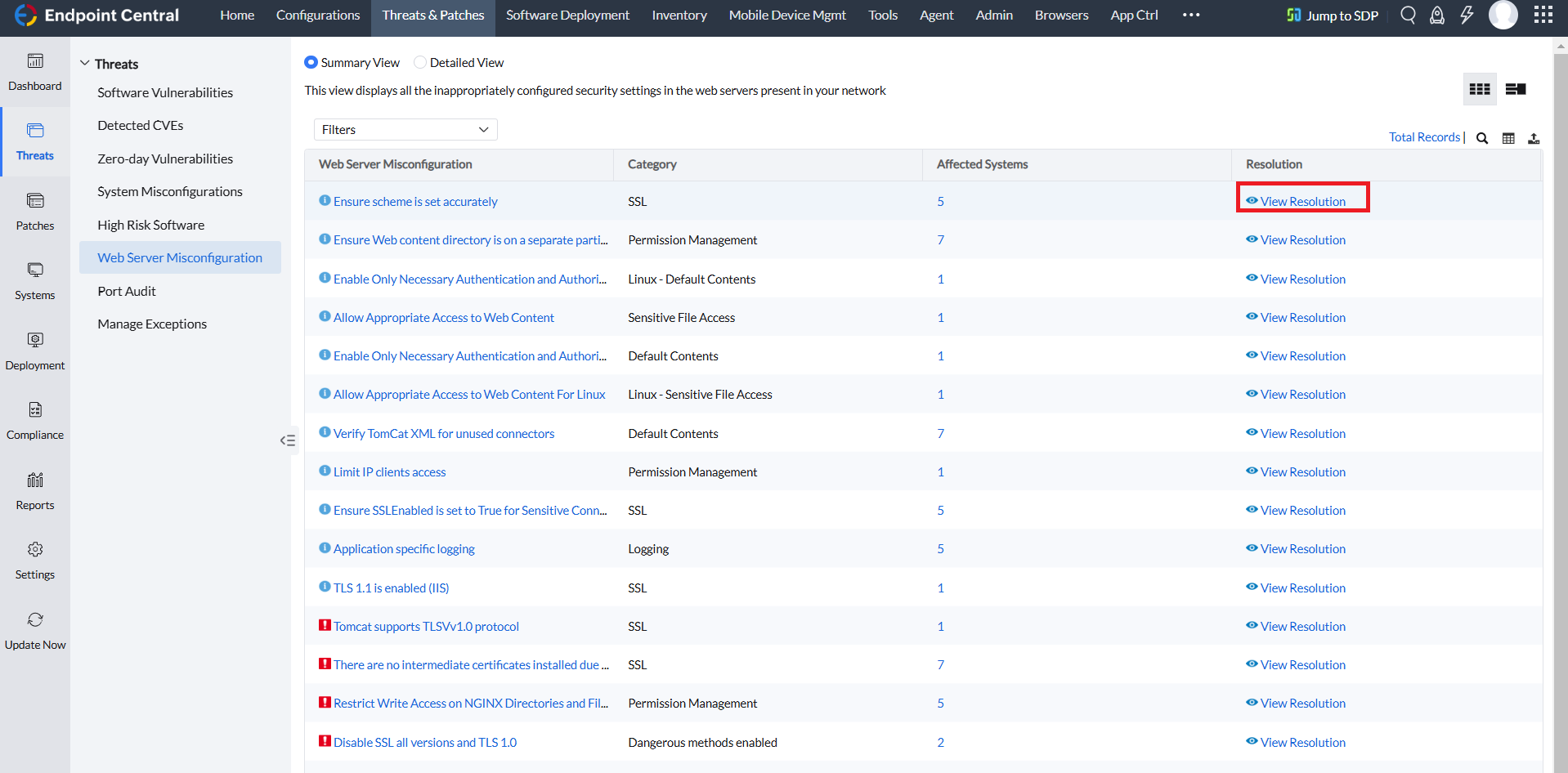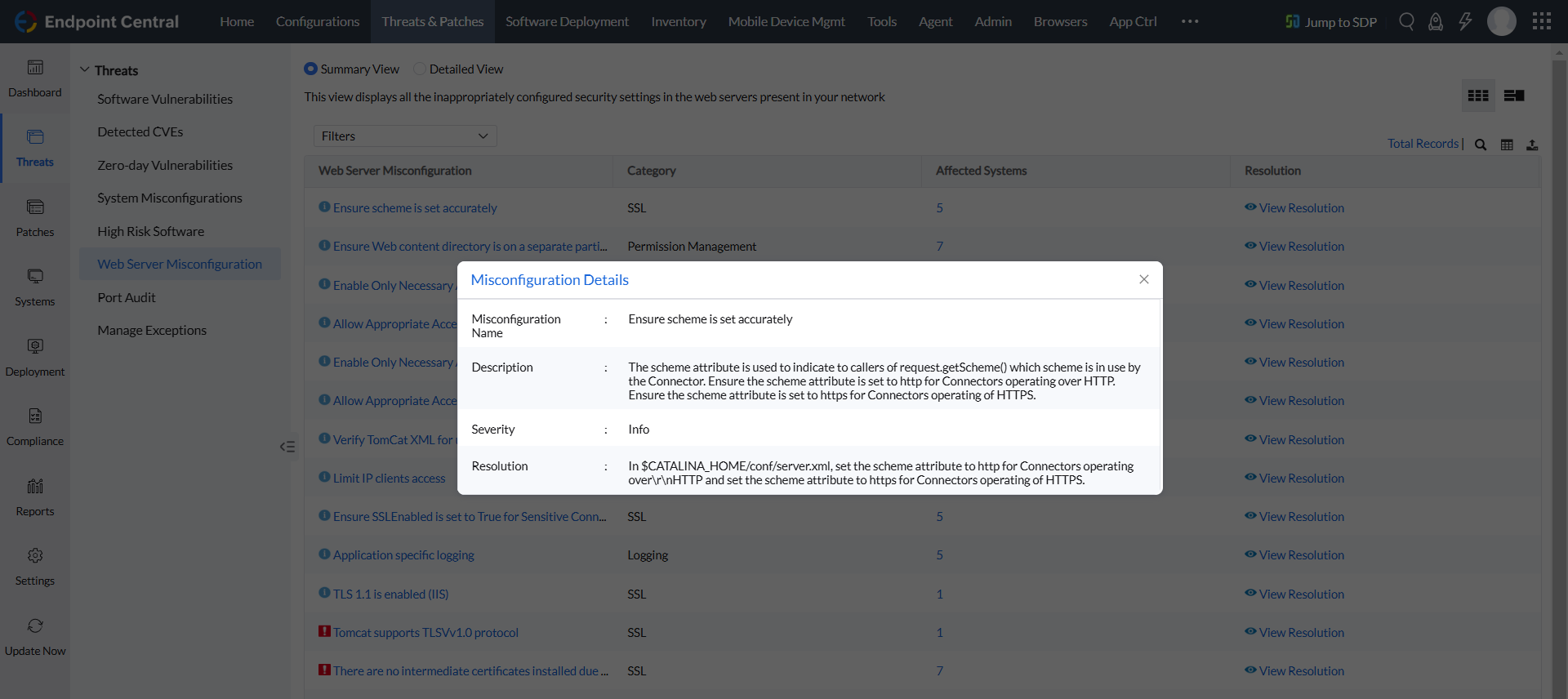

Web servers are critical components in the digital infrastructure of organizations, hosting websites, applications, and providing essential services to users. Due to their central role and constant exposure to the internet, web servers are prime targets for cyber attackers. Misconfigurations in web servers can lead to severe security breaches, data leaks, and service disruptions. Ensuring the security of these servers through web server hardening is essential for protecting sensitive information and maintaining the integrity of digital services. Cyber attackers could exploit flaws in web servers, potentially gaining access to systems hosting web servers and performing unintended actions. Thus, hardening web servers and ensuring server security are important aspects in vulnerability management.
Web server hardening involves:
Endpoint Central uses predefined templates for security configurations designed to harden your web servers. These templates are curated from CIS (Center for Internet Security) and STIG (Security Technical Implementation Guide) benchmarks, ensuring adherence to industry standards. Any deviation from these templates will be as listed as a misconfiguration and the console will provide resolutions to address the same.
Note: Endpoint Central supports web server hardening for Apache, nginx, IIS, and Tomcat.

To view the web server misconfigurations present across the managed web servers, click on Threats & Patches → Threats → Web Server Misconfiguration.
In this window, all web server misconfigurations are listed. Under Category, you can see the misconfiguration type; under Affected Systems, you can see the count of managed servers with that misconfiguration. By clicking on that count, you can see the affected servers individually.
By clicking on the Filters button, you can filter and prioritize them as per your need based on specific criteria. Click on View Resolution for each web server misconfiguration.

Follow the resolution manually in the machine on which the web server is installed.
This is applicable only if the resolution involves modifying web server configuration files. Graphical User Interface for accessing and modifying the configurations is not available for any other servers except IIS. Therefore, for Apache, Tomcat and nginx, you need to open the configuration file using a text editor such as notepad, notepad++ and perform the resolution mentioned. For IIS, the modifications to the server configurations can be made through "Internet Information Services(IIS) Manager".
If you have any further questions, please refer to our Frequently Asked Questions section for more information.